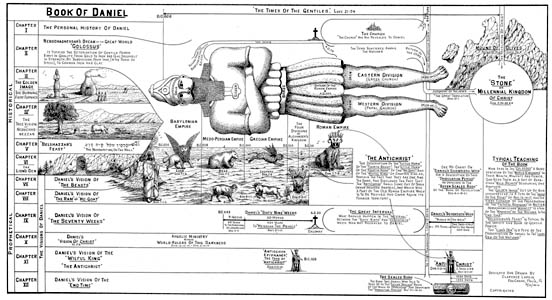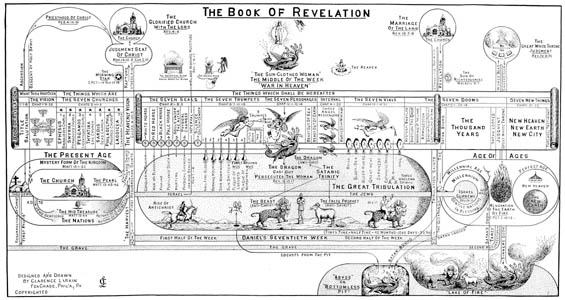Nowhere in the Bible was anyone ever baptized; until after they were saved!
Month: August 2010
A Study of Biblical Proportions
Sometimes we read about an object such as Noah’s Ark or the Temple and wonder how big it was or how it compares to something else we’re familiar with. A unique thing about the Christian Scriptures as compared with other holy books is that it contains far more detail and specificity about the things it describes. For example, we know the general dimensions of Noah’s ark, how many days passed between each major milestone of that event, and how many people were on board. We know how many of each implement was in the Tabernacle (and later the Temple) and how many people were in each camp in the wilderness.
We are getting into a time period in which it is possible to quickly make some calculations about these objects and compare them to things we know of today. Search engines are now in the process of better organizing the world’s knowledge in ways that make them not only easy to find, but easy to connect to other things that are similar. One such tool is called WolframAlpha.
They have a number of good examples showing the powerful capabilities of their “computational knowledge engine.” I want to discuss how such an engine might be used to aid in Bible study. Consider the Ark of the Covenant. Just how big was it? Well, with the right data structure, one could search for that ark and would be presented with some “fast facts” about it, like the materials used to build it, where it went, and of course, its dimensions. With those dimensions, it would be possible to set up a programmed interface to plug those numbers into WolframAlpha to find its volume — 5.6 cubits^3.
But, that’s not all. It will also convert that result to something more relevant to us today: 19 cubic feet or 142 gallons. Currently WolframAlpha doesn’t make a lot of volumetric comparisons, but give it time: it’s still very new. One thing they can do, however, is compare lengths. So, an input of the perimeter of Solomon’s Temple would tell you that you’d walk the same distance by going around the Temple as you would by walking from the nose to tail of a Boeing 747, or a little more than the perimeter of a city block in Manhattan. This takes something that is measured and communicated in an old, archaic unit and makes it more understandable to the modern reader.
Really, anything in the Bible that can be quantified can be calculated and compared to other numbers. As the big-name search engines attempt to organize and correlate all the world’s knowledge, we have a wonderful opportunity to do the same with all the Biblical knowledge of the ages. We can make outdated units more interesting and relevant and use new technologies to help us better understand the things we read about God and his dealings with mankind.

Every now and then people come across a classic scholarly work that for one reason or another seems to have been forgotten or at least taken out of the main stream of cultural influence although their truth is just as timeless as when it was originally produced. Clarence Larkin’s book, Dispensational Truth, is one such treasure. It is still sold in Christian bookstores and has been referenced by popular authors like Tim LaHaye, but that’s about the extent of it. His charts are available within Sword Searcher, which has a good bio. You can also get the full text and images for free at www.preservedwords.com.
To give you an idea of his influence over time, consider this: every illustration I’ve ever seen describing the statue in the vision of Daniel 2:31-45 is a variation of Larkin’s original graphic.

I can identify with this particular author because, like me, he was a young mechanical engineer with some experience in drafting before being called into ministry. While a pastor, he employed his skills toward creating exacting illustrations of the Bible. The Larkin Estate indicates that he produced 205 charts and illustrations, complete with biblical references and full explanations of each. The ones I find most impressive are his works titled “Rightly Dividing the Word of Truth” and “The Book of Revelation.”

As you can see, the original illustration is a black-and-white print. While Mr. Larkin did produce color charts, those he published were not, perhaps due to technology or cost limitations on producing a full-color book back in the 1920’s. I have found some colorized versions, but in my opinion they lack the original quality of his work. It has been on my to-do list for some time to make an attempt at converting at least one of these charts to a high-quality, interactive web presentation. Given the astounding detail of each chart, I’m not expecting to complete that task any time soon (any graphic designers out there looking for a project?).
He built these graphics at a time when no one had heard of the Bible being converted to a digital format. No one could yet dream of the complex visualizations made possible by advanced technology of the information age. I personally believe he was ahead of his time in creating ways to visualize related points in a unified whole that gives a consistent biblical picture.
Clarence Larkin gives due credit to the one who made such a work possible:
“With profound gratitude and thankfulness for the blessing of his Heavenly Father…in the hands of the Holy Spirit…”
Indeed, without the direction of the Spirit, no one man alone could accomplish this remarkable work. He also could not have done it if he had chosen to focus efforts on presenting and debating multiple theological views. On this point, the author states:
“[I have] sought to avoid such criticisms and to simply expound the Word of God as the Holy Spirit opened it up to [me.]”
It took three years to produce a book on just one theological view which he earnestly believed and was framed by nothing more or less than the scriptures. Had he gone beyond that into every wind of doctrine, three years would scarcely be enough to complete a discussion on the Book of Daniel alone!
Therein lies an area in which I believe it’s time to shift our thinking about the way we produce and use Bible study software. Everything available today includes a host of commentaries, versions, systematic theologies…all of which tend to have conflicting viewpoints to one degree or another. Yet, when Christians gather together for Bible study, only one such view is presented. To do otherwise would lead to confusion and be time prohibitive to boot. The same holds true for the working man or woman today who has trouble finding time to even read the Bible daily, let alone sift through a full library of data.
The teacher of such a study would wisely consult multiple resources while praying for God’s guidance, so in that sense today’s study tools are great. But, I believe that in-depth study should be made possible for everyone, not just the scholars and teachers. One way to do this is to 1) make it free to everyone and 2) limit the information to only authoritative works which agree with those of the author of said software as guided by the Spirit. While I do agree that it’s a not a good idea to limit access to multiple viewpoints, I do not agree that presenting an endless list of options to sort through accomplishes that goal. That kind of information overload actually makes good information harder to find, which is the last thing I want.
By restricting the database to a more popular-level summary based on detailed and reliable scholarship of old (such as the charts mentioned above), I expect it to be possible for one or a few godly men to produce more advanced tools quite economically. They could be used by anyone and would contain the same level of accuracy, detail, and cohesiveness of the many works of Clarence Larkin and others like him. Anyone willing to help in this endeavor is more than encouraged to pray and if you feel led to do so, contact me by leaving a comment on this blog.
I came across a video the other day that does a great job of explaining a concept that I am working implementing in new Bible study tools. Take a look at what Metaweb is doing:
Today’s Bible study tools have the same problem: they primarily use words in order to find relevant content from a library of sources designed to explain some passage or topic. If a user searches for the word “Paul,” a good program would find all verses with Paul’s name in them, some commentaries about his life, maps of his missionary journeys, and maybe show a long list of other included resources. But, what about the verses in which Paul is still named Saul? Would these tools help you easily discover that Paul was once a pharisee, or take you right to the verses in which he’s mentioned in that role, without having to click through some chain of links or menus?
One way to find those verses would be to search a topical index for Paul which would list passages about the man regardless of his name at the time. But, a user would have to go specifically to a topical index instead of a verse search, and even then he won’t find everything. Another problem is that people are often referred to by personal pronouns or as part of a group. So, if you searched for “Thaddeus” you wouldn’t be taken to the verses which reference “the apostles” but don’t list all of them by name.
The same things holds true for places. At dynamicbible.org, I can search for “Bethel,” pick a verse I want to look at, and click that word to see it on a map. But, there are two places with that name and I only want to see the one dealt with in that particular verse. So, you can see how using words alone to search for biblical references won’t return a full set of results or might return irrelevant things.
That’s where I plan to help, except my goal is far more limited in scope than Metaweb. I’ll start with the text of the Bible itself and then begin linking each word to location information, biographical information, or whatever else is relevant to that particular text. Thankfully, a good bit of this data is already available in different formats. If all the words in the Bible could be described as an entity (a person, place, thing, event, etc.) rather than just a string of letters, it would not only ensure that you find all the references to that entity (no matter what word is used to describe it) but also guarantee that you find the right results.
Keep an eye on this blog for more examples of the possibilities behind such a concept. Believe me, this is only the beginning!